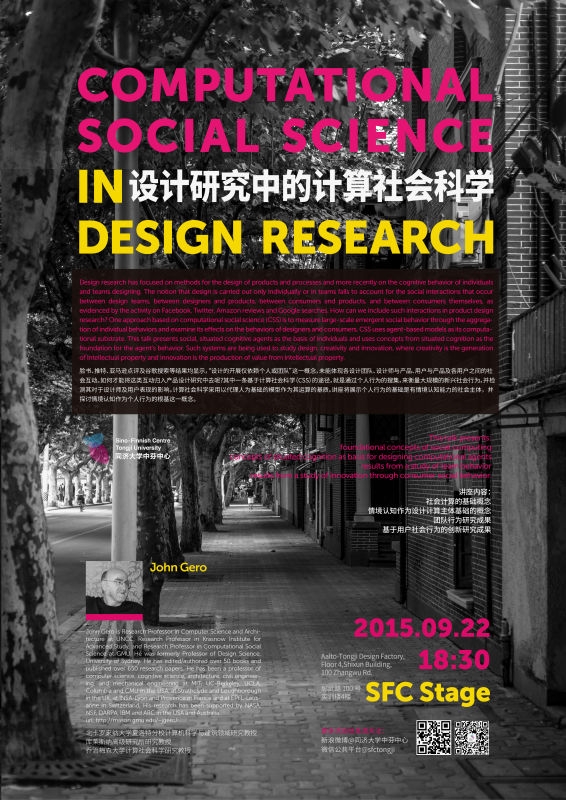
Theme of the Lecture
Design research has focused on methods for the design of products and more recently on the cognitive behavior of individuals and teams designing. The notion that design is carried out only individually or in teams fails to account for the social interactions that occur between design teams, between designers and products, between consumers and products, and between consumers themselves, as evidenced by the activity on Facebook, Twitter, Amazon reviews and Google searches. How can we include such interactions in design research? One approach based on computational social science is to measure large-scale emergent social behavior through the aggregation of individual behaviors and examine its effects on the behaviors of designers and consumers. Computational social science uses agent-based models as its computational substrate. This talk presents social, situated cognitive agents as the basis of individuals and uses concepts from situated cognition as the foundation for the agent’s behavior. Such systems are being used to study design, creativity and innovation, where creativity is the generation of intellectual property and innovation is the production of value from intellectual property.
Time
18:30, 22 September 2015
Venue
Tongji University Sino-Finnish Center Stage
Short Biography of Lecturer
John Gerois Research Professor in Computer Science and Architecture at UNCC, Research Professor in Krasnow Institute for Advanced Study, and Research Professor in Computational Social Science at GMU. He was formerly Professor of Design Science, University of Sydney. He has edited/authored over 50 books and published over 650 research papers. He has been a professor of computer science, cognitive science, architecture, civil engineering, and mechanical engineering at MIT, UC-Berkeley, UCLA, Columbia and CMU in the USA, at Strathclyde and Loughborough in the UK, at INSA-Lyon and Provence in France and at EPFL-Lausanne in Switzerland. His research has been supported by NASA, NSF, DARPA, IBM and ARC and has been cited over 5,000 times in the last 5 years.